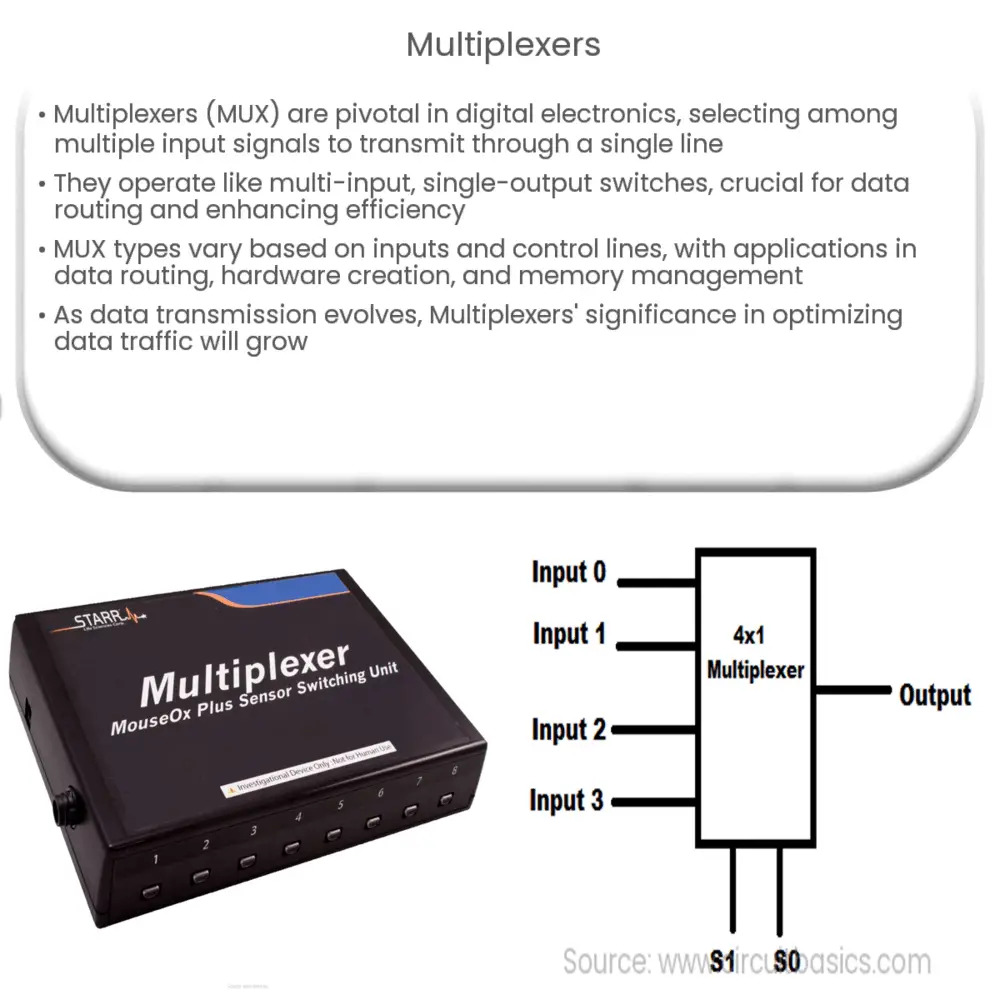Explore the role of Multiplexers in digital electronics and communication, their types, design, applications, and future trends.

Multiplexers: An Insight into Data Transmission
A Multiplexer, often abbreviated as MUX, is a vital component in the field of digital electronics and telecommunications. Acting as a device that selects between several analog or digital input signals and forwards the selected input into a single line, a Multiplexer has broad applications across different sectors.
Understanding the Working Principle of Multiplexers
The functionality of a Multiplexer is akin to a multiple-input, single-output switch. Based on the control signals, it decides which input should be forwarded to the output at any given time. This mechanism plays a crucial role in data routing, enabling the transmission of vast amounts of data over a single line, thereby increasing efficiency and reducing costs.
Types of Multiplexers
- 2-to-1 Multiplexer: This is the simplest form of Multiplexer, with two inputs, one output, and a single control line. Depending on the binary value of the control signal, the output will reflect either of the two inputs.
- 4-to-1 Multiplexer: A step above, this MUX has four inputs, two control lines, and a single output. The control lines decide which input to forward.
- 8-to-1, 16-to-1, 32-to-1 Multiplexers: These types of MUXs have 8, 16, and 32 inputs respectively. The number of control lines required increases with the number of inputs, following a binary logarithmic scale.
Application of Multiplexers
Multiplexers have widespread use in various fields, including:
- Data Routing: As already mentioned, MUXs are instrumental in routing multiple input data into a single line, making them indispensable in networking and telecommunications.
- Hardware Implementation: They are used in constructing hardware functionality such as ALU (Arithmetic Logic Unit).
- Memory Management: MUXs help in managing memory space by allowing data storage from different sources into a single memory unit.
As the world of data transmission continues to evolve, the significance of Multiplexers in managing and optimizing data traffic is more crucial than ever. In the next section, we will delve into more advanced aspects of Multiplexers, including their design and architecture, integration with other digital devices, and future trends.
Design and Architecture of Multiplexers
The design of a Multiplexer depends largely on the number of input lines, output lines, and control lines. Each input line corresponds to a specific binary code on the control line, which when activated, allows that input to be transmitted to the output. The most common design methodology involves the use of AND, OR, and NOT gates to form the basic structure of the Multiplexer.
Integration with Other Digital Devices
Multiplexers can be integrated with a variety of other digital devices for a multitude of functionalities. A common example is the integration of Multiplexers and De-multiplexers in communication systems to manage bidirectional data flow. They are also used alongside encoders and decoders in data transmission systems for efficient signal conversion and routing.
Future Trends
With the exponential growth of data traffic and digital communication, the role of Multiplexers is bound to become even more significant. The future could see the development of more advanced and efficient Multiplexers, capable of handling larger data inputs, faster switching speeds, and even greater integration capabilities with other digital systems.
Conclusion
In conclusion, Multiplexers serve as a key device in the realm of digital electronics and communication, enabling efficient and cost-effective data transmission. They are a versatile component, offering a wide array of functionalities from basic data routing to complex hardware implementation and memory management. The evolving needs of the digital world are driving continuous innovation in Multiplexer technology, making it an exciting area to watch for future advancements.
Understanding the concept of Multiplexers not only provides insight into the fascinating world of data communication but also unveils the mechanisms that enable our day-to-day digital interactions. From networking infrastructure to the hardware of our personal devices, Multiplexers play a silent yet indispensable role, truly proving that they are the unsung heroes of the digital world.

